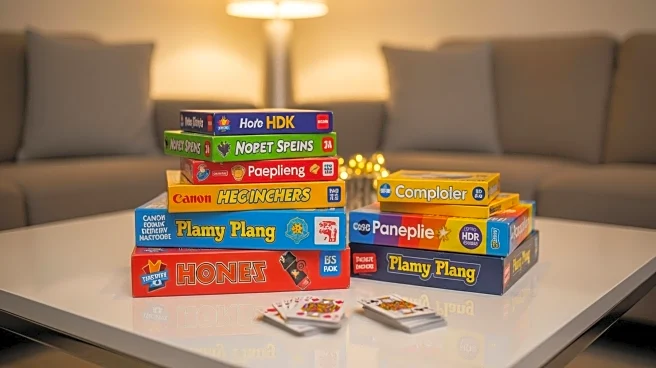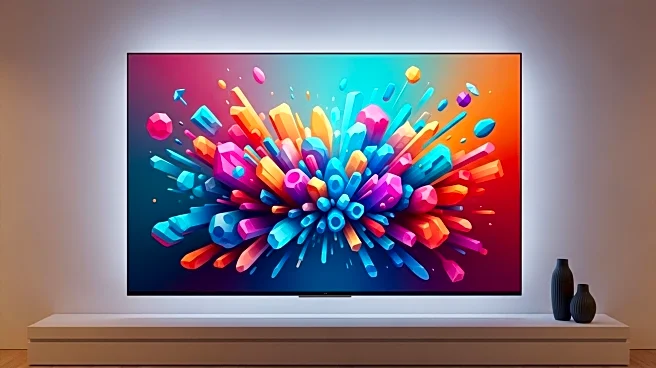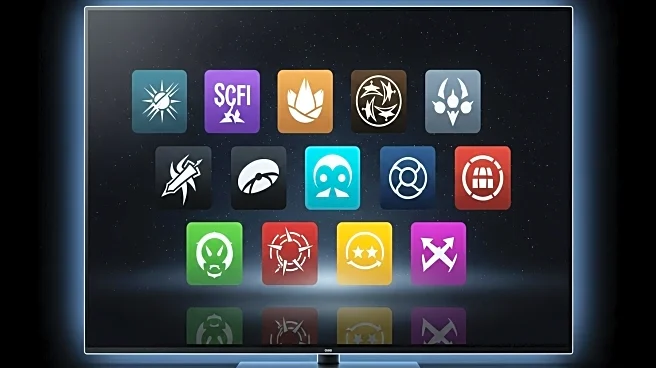What's Happening?
Netflix has launched a new feature allowing subscribers to play games on their smart TVs, marking a significant expansion of its gaming strategy. The feature, accessible via the Games tab on the Netflix TV app, uses a smartphone as a controller. This move follows Netflix's earlier introduction of mobile games and a game controller app for iOS devices. The new slate includes party games like Boggle Party, LEGO Party!, Party Crashers: Fool Your Friends, Pictionary: Game Night, and Tetris Time Warp, designed for group play. The games are currently available on select TV screens in specific countries, with plans for broader availability.
Why It's Important?
Netflix's expansion into TV-compatible gaming represents a strategic shift to enhance user engagement and diversify its offerings beyond streaming content. By introducing party games, Netflix aims to attract a wider audience and encourage social interaction among users, potentially increasing subscriber retention. This move positions Netflix as a competitor to major video game companies, leveraging its existing subscriber base to explore new revenue streams. The integration of gaming into the TV experience reflects broader industry trends towards interactive and immersive entertainment.
What's Next?
Netflix plans to expand the availability of its TV-compatible games, potentially introducing more titles and features to enhance the gaming experience. As the company continues to develop its gaming strategy, it may explore partnerships with game developers and invest in original game content. The success of this initiative could influence Netflix's future decisions regarding content diversification and user engagement strategies.
Beyond the Headlines
Netflix's foray into gaming highlights the convergence of media and entertainment platforms, as companies seek to offer comprehensive experiences to consumers. The introduction of party games may encourage social interaction and community building among users, fostering a sense of connection and shared experiences. This development also raises questions about the future of streaming services and their role in shaping entertainment consumption patterns.










